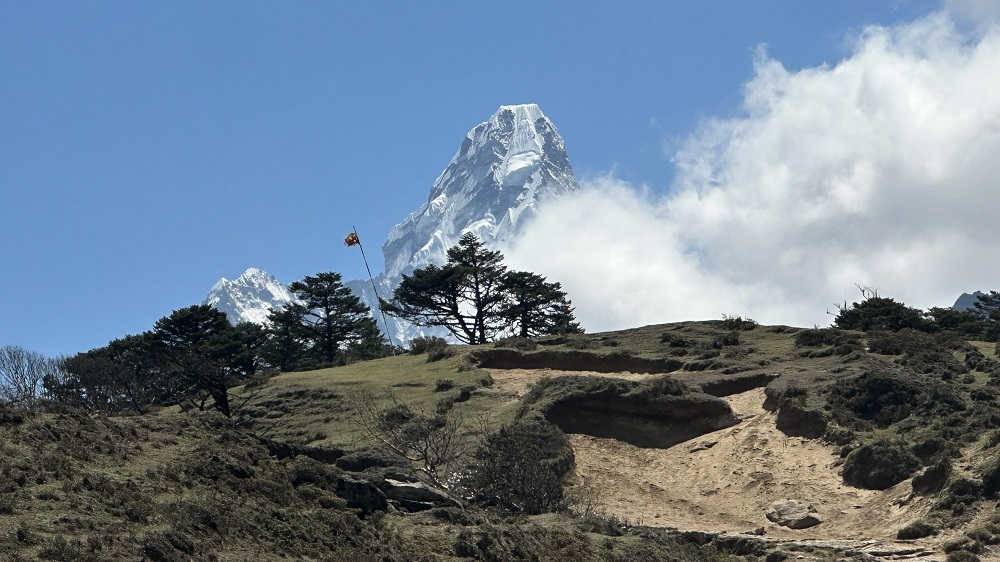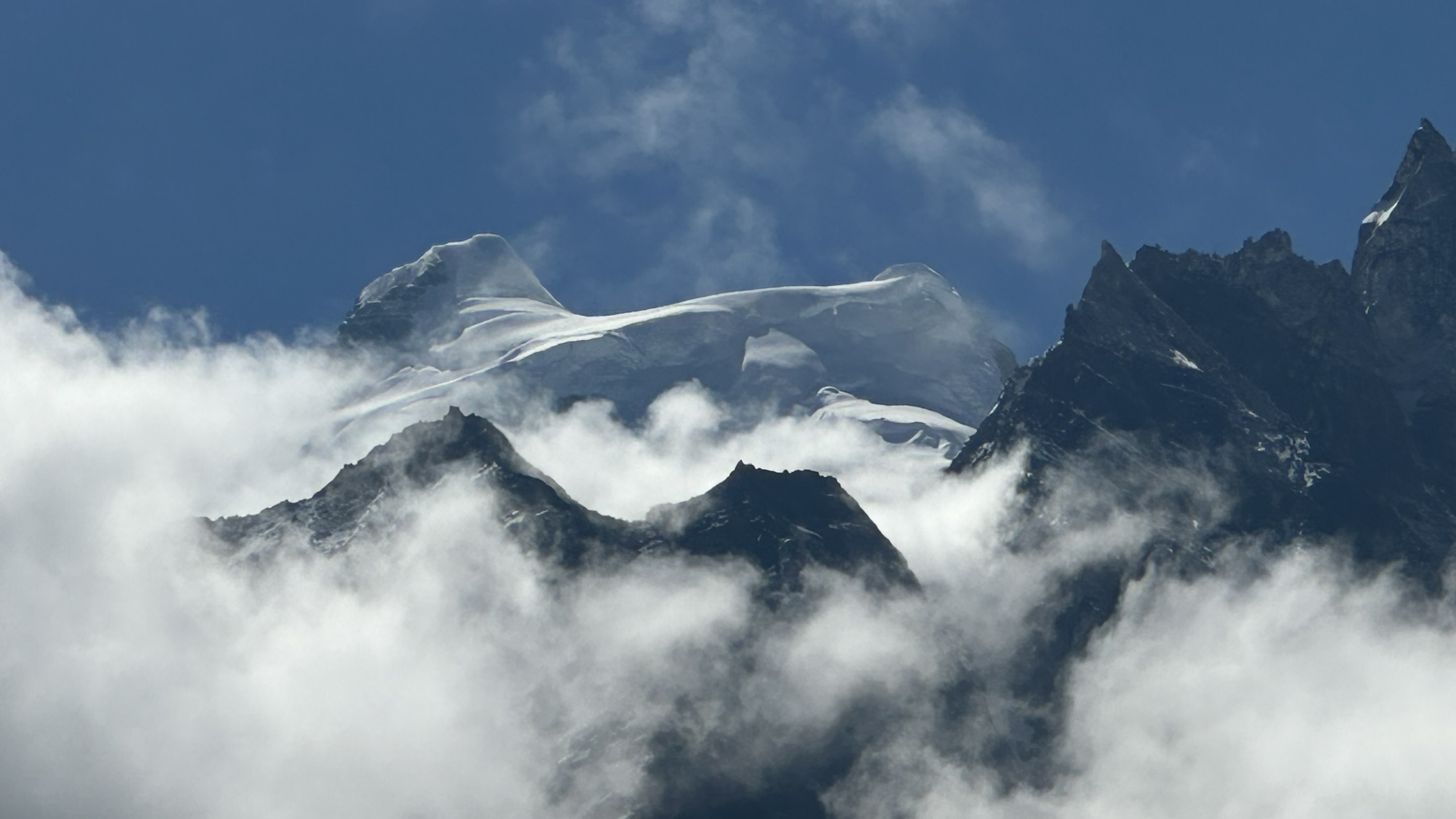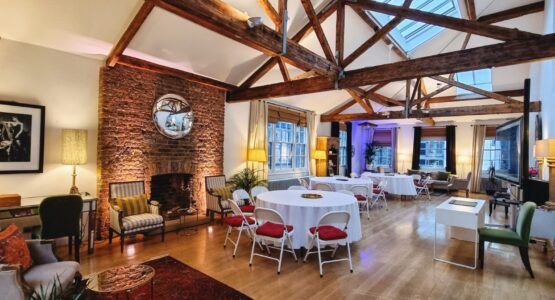Chris Perks (1983) studied Medical Sciences at St John’s, and he enjoyed college life to the full, playing ‘social’ rugby and football, running the MedSoc and organising desserts evenings and the food and drink for a May Ball. Very much a generalist, he opted for a career in Primary Care in his hometown of Pershore. Continuing with a diverse range of interests, he volunteered as a Motorsport doctor, as a trek doctor in Nepal, built a car and set up a local charity. Now retired he remains the local GP mentoring lead, enjoys walking, Morris dancing, Pilates and tennis.
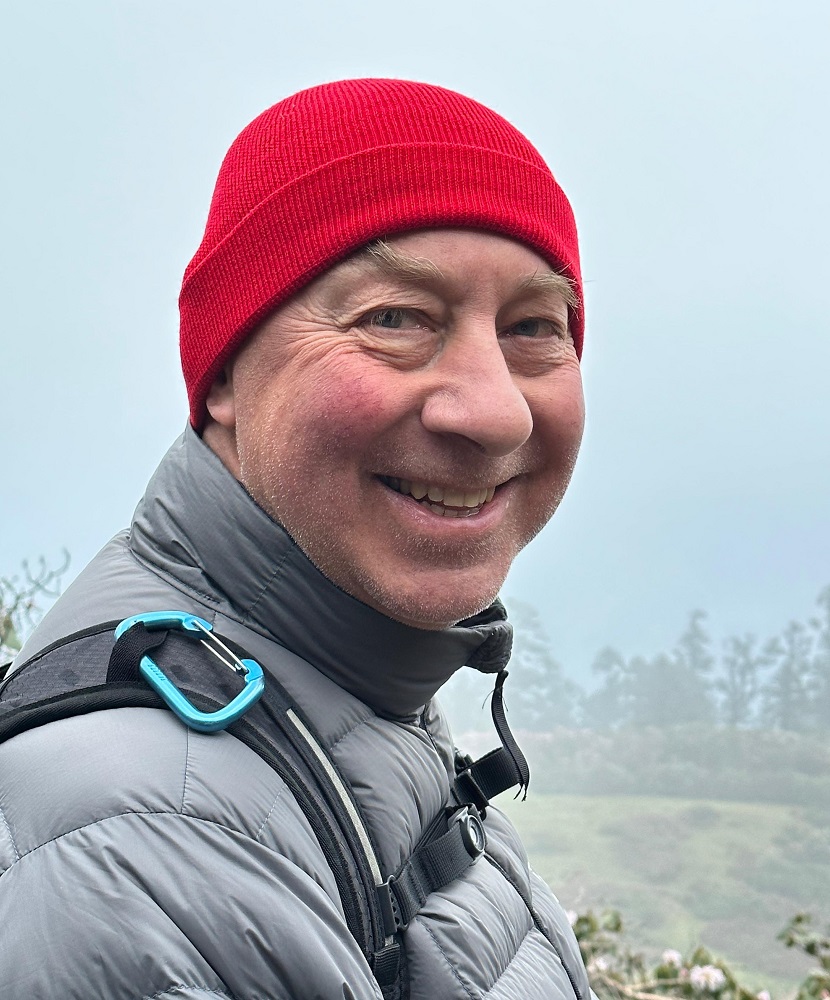
I’ve always considered myself to be a Jack of all trades yet striven to be master of them all. Indeed, my admission interview centred on my interests in Ferraris and the Loch Ness monster rather than academic subjects. Perhaps this reflects a tendency to get bored easily, or a desire to understand everything from sonar and suspension geometry to what makes humans behave as they do. On reflection it is therefore no great surprise that I pursued a career in General Practice which allowed enough space to enjoy extracurricular life.
One passion that has persisted since my teens is my love for walking, orienteering (getting only a little bit lost) and exploring. While at College I toured Europe, walked in Scotland and joined an archaeological dig in the Golan Heights. But it was during a parent-teacher event at my children’s school that my interest in Nepal was first kindled. John, a geography teacher, was taking sixth formers to Nepal and wanted to know if I’d like to go along as a doctor. The answer was a very simple one.
I undertook four treks and my intrepid wife, Gill, another GP – who had explored Kenya and Papua New Guinea before we met – was also roped in as a trek doctor. John ran a charity raising money for education and health funds in Nepal and I soon joined him as a trustee. In the mid-2000s we entered the sandwich years, looking after both children and parents, so our walking trips became closer to home. We had thought that our trips to Nepal were a chapter that had closed, but then followed another of those conversations with John.

‘Next year will be the 70th anniversary of the first ascent of Everest. I’m organising a trek for the Himalayan Trust. Do you want to come?’ Another simple answer followed from me.
In May 2023 seven of us landed in Nepal ready for our trek. Unfortunately, only five kitbags arrived resulting in the two ladies having to source the necessary kit in Kathmandu. Equipped with best Chinese boots and plastic waterproofs money could buy, we set off together at last.

In 1953 there was no airport at Lukla and barely any vehicle access to the Khumbu Valley, so the British Expedition, led by John Hunt, walked in from Kathmandu Valley over several weeks, getting fit and acclimatising in the process. Our itinerary followed in some of their footprints, climbing Pikey Peak (4065m) en route. The views from the top of the Peak were said by Sir Edmund Hillary to be the ‘finest views in all of Nepal’. Life is not straight forward though. We discovered visibility limited to 50m on Pikey Peak. I guess we’ll have to take Ed’s word for it!
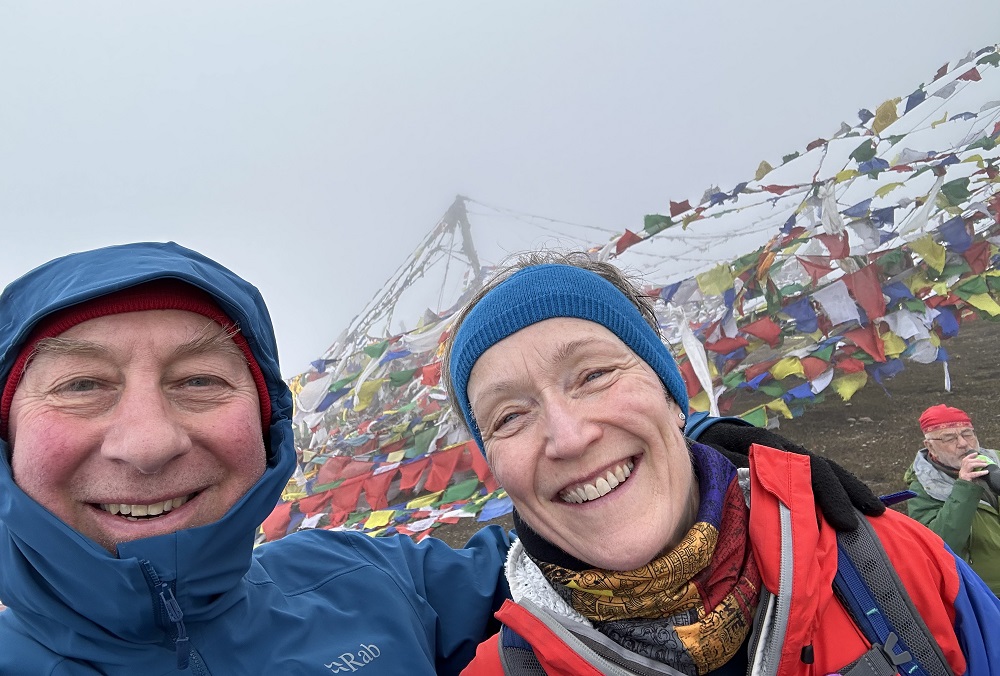
But life, and trekking, is full of plenty of ups as well as downs. The two delayed kitbags were reunited with their owners and the pre-monsoon weather started to look brighter. Some glorious walking through rhododendron forests with cuckoos calling from all around lifted the spirits. On entering the village of Monjo, where both John and I had been delayed on previous treks looking after ill children, we ate at the lodge of the marvellous Ang Dharke, who welcomed us with open arms as we all wept with the joyous emotion that only such reunions can generate.
Onwards and upwards to Namche Bazaar (3440m), we spent an evening with my old Redboys captain Sir Graham Wrigley (1982), and Robert Ross (1976), respectively the chair and a trustee of the Himalayan Trust UK (HTUK). More emotions, a little bit of beer and great company made for an excellent evening.
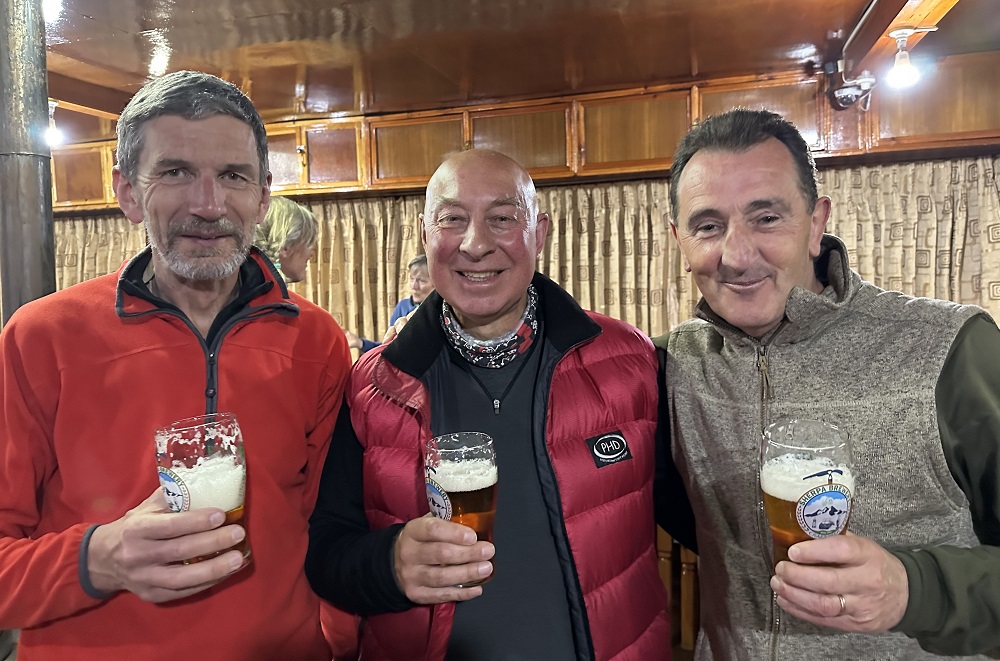
I was already familiar with some of the works of the Himalayan Trust UK through the aforementioned John, another trustee. Together the three painted a picture of a well-run enterprise that works with local communities to improve the education and health outcomes in the Taplejung area of Northeast Nepal. Because of minimal administration costs, more than 96% of all funds raised are spent in-country funding capital projects and training, but running costs come from the local and national government. Examples include training 750 teachers, a girls’ hostel, the provision of clean water and improved toilet facilities, and a significant reduction in maternal mortality through education and the midwifery training of local women.
The trek culminated in the further ascent to the Sherpa villages of Khunde and Khumjung, where a series of events were held at the local school to celebrate the anniversary. These were attended by members of the Himalayan Trusts of New Zealand, Australia and the UK, and celebrities such as Peter Hillary and Rheinhold Messner. We even met a local Nepali pop group who had flown in for the celebrations.
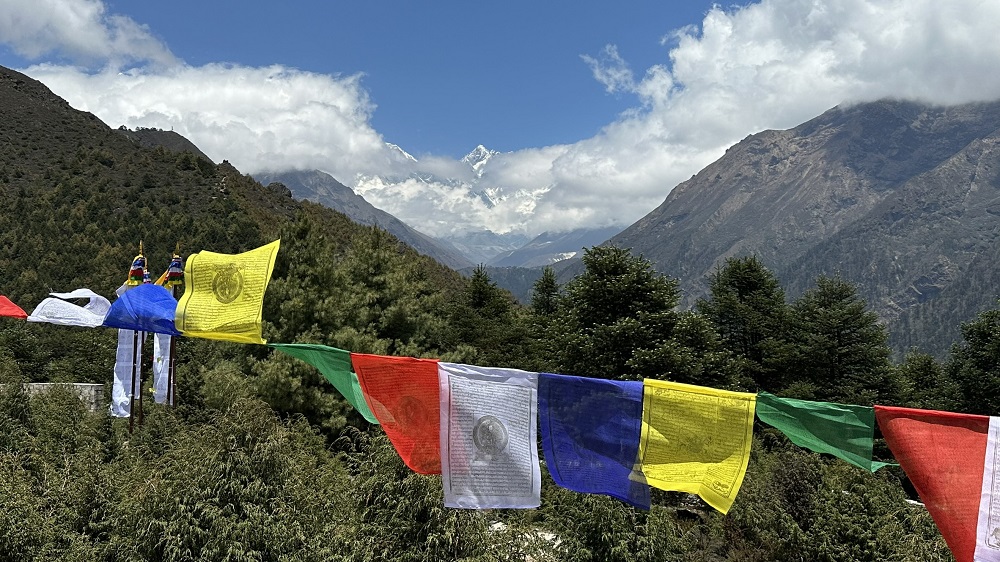
The following day we all planted trees to aid the reforestation of the national park and watched in awe as runners finished the Everest Marathon, before meeting the Namche Women’s group and hearing about the demographic pressures as men seek work outside the area. During our descent we visited Sagarmatha Next, a project encouraging all trekkers to take plastic down to lower altitudes for recycling, helping to clear the detritus that has built up with increased tourism. With 1kg bags of waste attached to our backpacks, we descended again to spend a night at Ang Dharke’s lodge, then Lukla and onwards to Kathmandu.
Our passion for Nepal has been rekindled and we have been inspired by the amazing work carried out by HTUK. But that only partially explains our latest adventure of walking from Home-to-Rome – in aid of HTUK of course! But that’s a story for another day…
